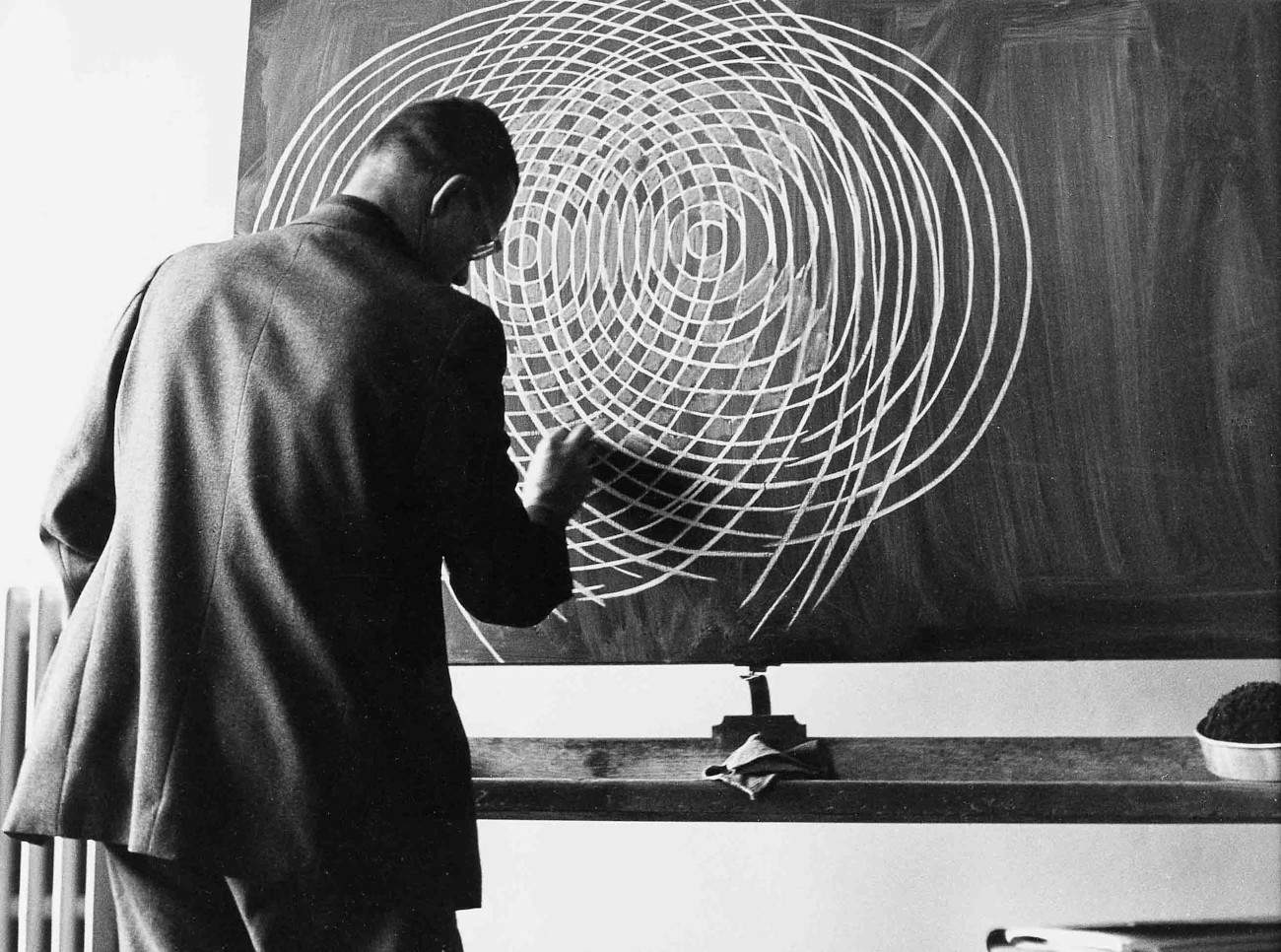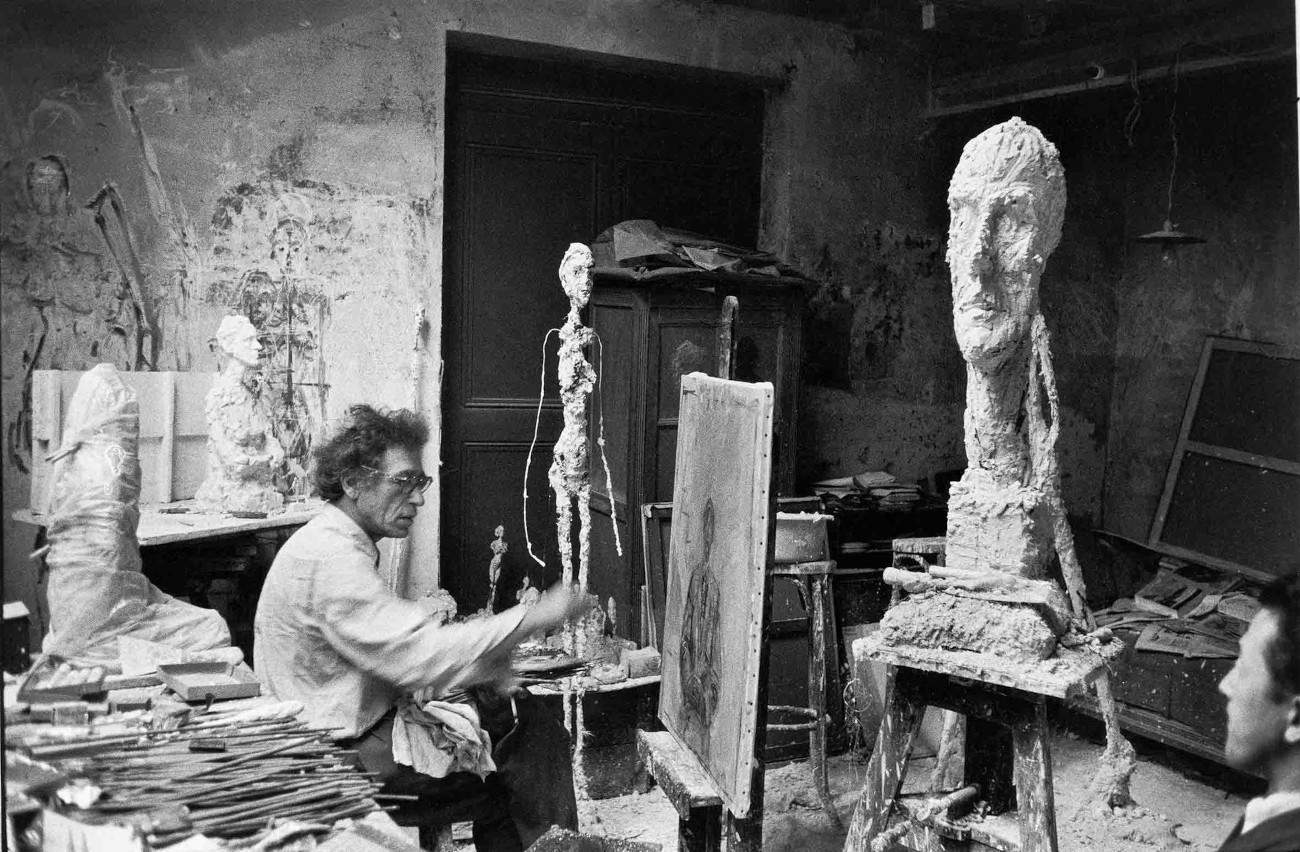From February 18 to July 21, 2024, MASI in Lugano presents the exhibition Face to Face. Giacometti, Dalí, Miró, Ernst, Chagall. Homage to Ernst Scheidegger, curated by Tobia Bezzola and Taisse Grandi Venturi, in collaboration with the Kunsthaus Zürich and the Stiftung Ernst Scheidegger-Archiv.
As part of activities to mark the centenary of Ernst Scheidegger ’s (Rorschach, 1923 - Zurich, 2016) birth, the museum opens its 2024 exhibition season with a tribute to the Swiss photographer. Active as a photojournalist and collaborator with the Magnum Photos agency and a frequent visitor to the Parisian avant-garde art scene, Scheidegger is internationally known for his artist portraits: famous are those of Alberto Giacometti, a lifelong friend. A multifaceted and multifaceted personality, Scheidegger was also a painter, graphic designer, filmmaker and, later, gallery owner and publisher.
The exhibition aims to trace the photographer’s output through more than one hundred images that include unpublished youth shots from the decade 1945 - 1955 and famous artist portraits, made on commission from the mid-1950s. The exhibition aims to bring out how the social accent, poetic and experimental gaze of the early work resolves itself in the airy, clear and elegantly calculated compositions of the artist portraits that made Scheidegger famous. The “face-to-face” between Scheidegger and the protagonists of twentieth-century art develops in a dialogue between the photographic portraits and a selection of works by the artists portrayed from time to time. A section that acts as a trait d ’union between the two chapters of the itinerary is instead dedicated to the close connection with Alberto Giacometti. The exhibition also presents the well-known short film Alberto Giacometti, made by Scheidegger in collaboration with Peter Münger between 1964 and 1966.



Strong luminous contrasts, alienating perspectives and casual focus characterize Scheidegger’s early works, with which the exhibition route opens. They are private shots, taken in black and white with a Rolleiflex camera, the result of the artist’s travels between Switzerland, Italy, the Netherlands, Yugoslavia and Czechoslovakia. From Belgrade to Montecassino, from Val Verzasca to Paris, the images immortalize the inhabitants of a Europe devastated by conflict, but also eager for life: abandoned shipyards, pure faces of children in orphanages and juvenile prisons alternate with tales of a humanity hungry for life, spilling out onto the streets.
At this stage, Scheidegger focuses on people and the everyday reality he can capture with poetic accents and a social focus, in which he seems to forget the lessons he learned at the Kunstgewerbeschule in Zurich on object photography. Hers is a repertoire that “encompasses many classic themes of post-World War II photographic and cinematic neorealisms: the glare of stage lights on the faces of circus performers and clowns, the cheap thrills of the fair and amusement park, the noisy popular life that animates the streets of Southern Europe, street children, the Salvation Army, festivals, workers’ demonstrations,” as curator Tobia Bezzola writes in the catalog.
From the dust of the streets to the calm of artists’ studios. Scheidegger’s path intersects with that of Alberto Giacometti, whom he met during his military service in the Engadine in 1943. In a dedicated room, the exhibition documents his deep relationship with the artist, told through a series of rare vintage prints. The photographs, taken during various encounters in both Stampa and Maloja in the Bergell Valley, the Engadine and Giacometti’s atelier in Montparnasse, Paris, show private moments from unusual perspectives. The bond of trust between the artist and the photographer would also allow Scheidegger to steal significant shots, such as one of Giacometti’s rare frontal portraits, later also used on the Swiss 100-franc bill. In a playful mise en abyme between painting and photography, the exhibition also features a portrait of Scheidegger painted by Giacometti around 1959.
In Paris Scheidegger began to frequent the avant-garde art and literary scene and specialized in artist portraits for trade magazines and publishing projects. From Joan Miró to Salvador Dalí, from Max Bill to Marc Chagall, the exhibition features portraits of great artists of the 20th century. Rarely posed, never glamorous, the artists always appear in their environment, at their easel or drawing board. It is a photography that does not celebrate itself, but places itself at the service of art. Above all, it always maintains a calm gaze, in which tact prevails. An attention that does not always imply closeness or intimacy: if Salvador Dalí seems surprised with playful irony and sympathy, in the portraits of Le Corbusier and Cuno Amiet the character of a commissioned work is not hidden and distance is perceived. By contrast, it is the portrait of an absence that of Sophie Tauber Arp, who died prematurely, whose empty studio Scheidegger immortalized.
Thanks in part to the cutting of light and compositions, the portrait of these personalities also extends in Scheidegger’s shots to the studio and art objects, revealing something of the creative process. An enlargement of space, which in the exhibition takes shape in a selection of artworks made by the immortalized artists.
On the occasion of the exhibition, the volume Ernst Scheidegger. Fotograf, with texts by Tobia Bezzola, Philippe Büttner, Alessa Widmer and Helene Grob. German and English edition Scheidegger & Spiess, Italian edition Edizioni Casagrande Bellinzona.
For info: masilugano.ch
 |
| MASI in Lugano pays tribute to Ernst Scheidegger, the Swiss photographer who immortalized Giacometti, DalÃ, Miró, Chagall |
Warning: the translation into English of the original Italian article was created using automatic tools. We undertake to review all articles, but we do not guarantee the total absence of inaccuracies in the translation due to the program. You can find the original by clicking on the ITA button. If you find any mistake,please contact us.